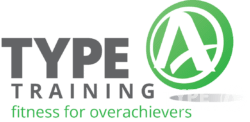HYROX blends running with eight functional workout stations, making for a race that really pushes both endurance and strength. Each station brings its own flavor—sometimes you’re pushing sleds, other times you’re rowing for distance.
The HYROX workout stations consist of eight stations you tackle in order, with a 1 km run before each one.

Getting a feel for the race flow helps you prepare, both physically and mentally. You’ll face movements that need power, stability, and stamina.
Popular posts:
Knowing what’s coming at each station can really help you pace yourself. This guide breaks down every challenge so you know what to expect on race day.
Each of the HYROX workout stations is designed to challenge different muscle groups and endurance levels.
Whether you want to finish strong, shave off some time, or move up a level, knowing the details of each station gives you a clear path. With the right plan, you can turn each challenge into an advantage.
Key Takeaways
- Get the scoop on every HYROX station and how the event flows
- Learn how to tackle each challenge with smart strategy
- Use training tips that prep you for all eight stations
Overview of HYROX Workout Stations
Understanding the HYROX workout stations can help you strategize and excel in your event.
In this section, we will break down the specific challenges of each of the HYROX workout stations.

Each HYROX workout station tests your abilities in a unique way, combining strength and cardio.
A HYROX event combines running with functional strength exercises. Endurance and power both matter—sometimes more than you might expect.
The structure, training, and sequence of stations all play a role in how you perform during the race.
HYROX Race Format
The HYROX race sticks to a pattern: 8 x 1 km runs paired with 8 workout stations. After each kilometer, you hit a station, then go right back to running.
This back-and-forth creates a rhythm—cardio, then strength, then cardio again. The stations test everything from pushing and pulling to lifting and carrying.
You’ll see sled pushes, wall balls, and farmer’s carries, among others. The weights and distances change depending on your division, so it’s worth checking the standards for your group.
No matter where you sign up, the format stays the same. That consistency lets you track your progress and compare results with others.
Functional Training Principles
Each station pulls from real-life or athletic movements. You push, pull, squat, and carry in ways that build practical strength.
It’s not just about muscles, though. Cardio matters—a sled push, for example, needs both strong legs and solid conditioning to keep moving when you’re tired.
Training for HYROX means focusing on muscular endurance, not just brute force.
Efficiency counts, too. Small tweaks—like grip, stance, or how you breathe—can save energy across every station. Practice these moves in training so you can switch between them smoothly on race day.
Importance of Station Order
The order of the stations matters more than you might think. Heavy sled work early on can wipe out your legs for the next run.
Later stations, like wall balls, really test your ability to keep going when you’re tired. Knowing what comes when lets you plan your effort.
You might push harder at certain points and back off at others. Lighter stations can give you a bit of a breather before the heavy stuff.
Here’s a quick look at the structure:
| Segment | Distance/Task |
|---|---|
| Run | 1 km |
| Station | Functional exercise |
| Repeat | 8 times total |
If you know the order, you’ll feel more prepared for what’s coming—both in your head and in your body.
Detailed Breakdown of All 8 HYROX Workout Stations
Every HYROX station challenges you differently. You’ve got to balance endurance, strength, and efficient movement—all while managing fatigue.
Make sure to familiarize yourself with the various HYROX workout stations to enhance your performance.
Good technique and a smart approach matter just as much as raw effort.
Ski Erg
The Ski Erg mimics cross-country skiing. You pull the handles down powerfully, hinging at your hips.
This move really hits your upper body endurance and core. Breathing matters—a lot.
Don’t yank too hard at the start or you’ll spike your heart rate. Find a rhythm and stick with it.
Key points:
- Start with straight arms, then drive using your lats and core
- Hinge at your hips, not your back
- Aim for longer, smoother strokes instead of short, choppy ones
Most folks stay just under max effort here. That way, you save something for the run and what’s next.
Sled Push
The Sled Push is a beast. You drive a heavy sled across the floor with short, strong steps.
Your legs, hips, and overall pushing power get tested. The weight depends on your division, but honestly, it always feels heavy when you’re tired.
Technique is huge. Keep your chest low, arms locked, and drive through the balls of your feet.
Don’t lean too far forward or you’ll stall out.
Many people break the distance into chunks, pausing to breathe. Sprinting and then stopping over and over usually doesn’t work out well.
Sled Pull
The Sled Pull has you dragging a weighted sled toward you with a rope. You’ll probably squat or sit low, leaning back as you pull.
This one works your grip, back, and overall pulling power. The trick isn’t just the weight—it’s keeping tension on the rope.
Letting the rope go slack wastes energy.
Tips:
- Lean back and drive through your heels
- Keep your core braced to protect your back
- Pull hand-over-hand in smooth motions—don’t jerk it
Try strong pulls with quick hand resets. That keeps the sled moving without burning you out.
Burpee Broad Jumps
Here’s where things get spicy. Burpee Broad Jumps mix a burpee with a forward jump.
Drop down, hit the push-up, then jump forward as far as you can. Keep going until you cover the distance.
This station hits your whole body and cranks up your heart rate. The constant up-and-down is just plain tough.
How to survive:
- Land softly to save your joints
- Keep your jumps even—don’t go for max distance every time
- Swing your arms to help with momentum
Break the distance into sets of steady reps. Smooth and repeatable beats wild and inconsistent every time.
Second Half of the HYROX Workout Stations
These stations really test your strength, control, and endurance—especially when you’re already tired. You’ll need steady pacing and good form to keep from fading late in the race.
Be prepared for the variety of challenges presented by the HYROX workout stations.
Rowing
You row 1,000 meters. Don’t just go all-out; focus on a rhythm that keeps your heart rate in check.
Push with your legs first, hinge at your hips, then pull with your arms. That order helps you get the most power without frying your back or shoulders.
Regardless of your experience level, mastering the HYROX workout stations is essential for success.
A steady pace usually works better than a wild sprint. Most aim for 24–28 strokes per minute.
Watch your 500-meter split to stay on track without blowing up.
Farmer’s Carry
Hydration and nutrition are key as you tackle the HYROX workout stations.
You pick up two heavy kettlebells or dumbbells and walk 200 meters.
Grip strength and posture are everything. Shoulders back, chest up, and walk with purpose.
Don’t lean forward or let the weights swing—they’ll eat up your energy and strain your back.
If grip is a weak spot, try dead hangs or loaded carries in training. Some break the distance into smaller bits, but the fewer stops, the better.
| Division | Typical Weight (per hand) |
|---|---|
| Men’s Open | ~24 kg |
| Women’s Open | ~16 kg |
| Pro Men | ~32 kg |
| Pro Women | ~24 kg |
Sandbag Lunges
You lunge for 100 meters with a sandbag across your shoulders. This station hits your legs, balance, and core.
Keep your torso upright and take big enough steps so your back knee nearly touches the ground. Rushed, short steps throw off your balance.
The sandbag shifts as you move, so brace your core. If your legs start to give out, slow down but keep going.
Stopping mid-lunge usually drains more energy than just pushing through.
Wall Balls
The grand finale: 100 wall balls. You squat with a medicine ball and toss it to a target on the wall.
By now, you’re tired. Make sure you squat deep—hips below parallel—then drive up and throw.
Power comes from your legs, but your arms finish the toss. Don’t try to do all 100 at once.
Break them into sets of 10–15, or whatever feels doable. Get your breathing right—exhale on the throw, inhale on the catch.
| Division | Ball Weight | Target Height |
|---|---|---|
| Men’s Open | 6 kg | 3 m |
| Women’s Open | 4 kg | 2.7 m |
| Pro Men | 9 kg | 3 m |
| Pro Women | 6 kg | 2.7 m |
Strategies for Completing Each HYROX Station
HYROX is all about managing energy, controlling your movements, and using strength wisely. Little tweaks in pacing and technique can save time and help you avoid burning out.
Pacing Techniques
You run a kilometer before every station, so how fast you go matters. Start steady—don’t sprint out of the gate.
Try to hold a pace you can stick with for all eight runs. That way, you don’t crash early.
At each station, break the work into chunks. For Wall Balls, for example, take a short pause every 10–15 reps.
Keeping your form tight is better than going until you collapse.
Use your breath to stay efficient. Match your breathing to your movement—exhale on the push, inhale on the reset.
Good breathing helps keep your heart rate down and lets you last longer.
Transition Management
Transitions can make or break your race. Know where you’re headed and how you’ll set up before you get there.
Move quickly but don’t rush so much that you lose your form. After a run, take a few steps to settle your breath, then get right into the next station.
Practice picking up equipment smoothly. Grab the Farmer’s Carry handles with purpose—don’t fumble around.
The less time you spend getting organized, the more you’ll have for the work that really counts.
Grip and Leg Strength Tips
Several stations really put your grip and leg power to the test. The Sled Push and Sled Pull hit your quads, glutes, and calves hard.
Meanwhile, the Farmer’s Carry pushes your forearms and grip endurance to their limits.
Try simple grip exercises like farmer’s holds, dead hangs, and kettlebell carries. These moves actually help you build the kind of strength you’ll need for those stations.
For leg power, stick with lunges, squats, and sled drills. They’ll get you ready for the heavy sleds and Sandbag Lunges.
When your legs start to feel heavy from running, you’ll be glad you trained them. A strong grip and solid legs just make every station feel less brutal.
Training Approaches for HYROX Challenges
You’ve got to prep for both the running and the workout stations. It’s not just about being strong or fast—it’s about building steady endurance and practicing the actual race format.
Endurance Building
Running is half the event, so your aerobic base really matters. You’ll knock out eight 1 km runs, which means you have to manage your pace and energy for 8 km, all while mixing in tough exercises.
Work on interval training to boost your speed and recovery. Try alternating 400–800 m runs at race pace with short rests. It’s a grind, but your body needs to get used to those repeated efforts.
Throw in longer steady runs once or twice a week. Go for 6–10 km at a pace you can hold. These runs help you keep going without totally burning out.
Mixing intervals, tempo runs, and steady mileage gives you the balance of speed and endurance that HYROX demands.
Functional Strength Development
Each station targets different muscle groups—pushing, pulling, carrying, and squatting. You want strength that actually translates to the race.
Focus on compound lifts like squats, deadlifts, and presses. These lifts build a solid base for sled pushes, carries, and wall balls. Keep the reps somewhere between 6 and 10.
Add in loaded carries such as farmer’s walks and sandbag holds. These moves mimic what you’ll face at the farmer’s carry station. Practice walking with heavy weights and keeping your posture tight.
Don’t skip core training. Moves like planks, rotational lifts, and hanging leg raises are clutch for sled pulls and rowing. A strong core keeps you moving efficiently, even when you’re tired.
Simulated HYROX Workouts
Prepare yourself for the physical demands of the HYROX workout stations through targeted training.
Practicing the race format gets your body and mind ready for those tricky transitions. You’ve got to train switching from running to functional work—no long breaks allowed.
Consider your pacing strategies for optimal performance across all the HYROX workout stations.
Try setting up mini-race simulations. Run 500–1000 m, then jump right into a station exercise like sled pushes or burpees. Go for several rounds, keeping rest to a minimum.
Experiment with time-based circuits to nail your pacing. Here’s one:
Many athletes find that practicing transitions between the HYROX workout stations is beneficial.
-
- 3 min run
When training, simulate race conditions by incorporating all eight HYROX workout stations.
- 2 min ski erg
- 3 min run
- 15 wall balls
Sessions like these help you control your breathing and manage fatigue. You’ll get used to moving under pressure—maybe even start to enjoy it.
By understanding the different elements of each of the HYROX workout stations, you will enhance your chances of success.
Remember, practicing efficiently at the HYROX workout stations can significantly improve your overall time.










